sightseeing safaris
About Namibia
Namibia, a country in southwest Africa, is distinguished by the Namib Desert along its Atlantic Ocean coast. The country is home to diverse wildlife, including a significant cheetah population. The capital, Windhoek, and coastal town Swakopmund contain German colonial-era buildings such as Windhoek's Christuskirche, built in 1907. In the north, Etosha National Park’s salt pan draws game including rhinos and giraffes.
Caracal safaris can provide custom made Namibian sightseeing tours on request before and after the hunt.
attractions
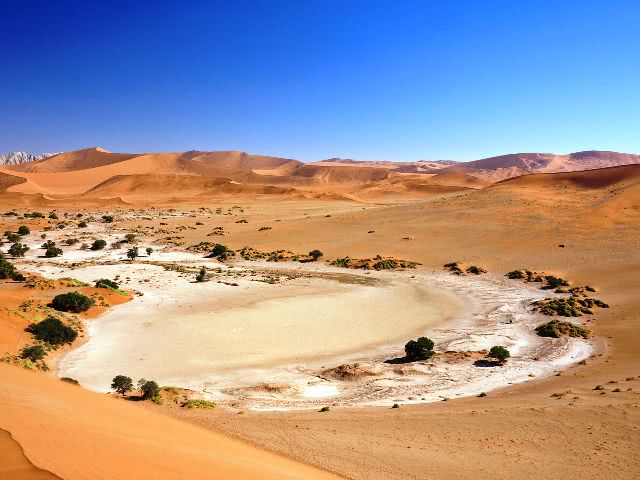
Sossusvlei
Sossusvlei is a salt and clay pan surrounded by high red dunes, located in the southern part of the Namib Desert, in the Namib-Naukluft National Park of Namibia. The name "Sossusvlei" is often used in an extended meaning to refer to the surrounding area, which is one of the major visitor attractions of Namibia.
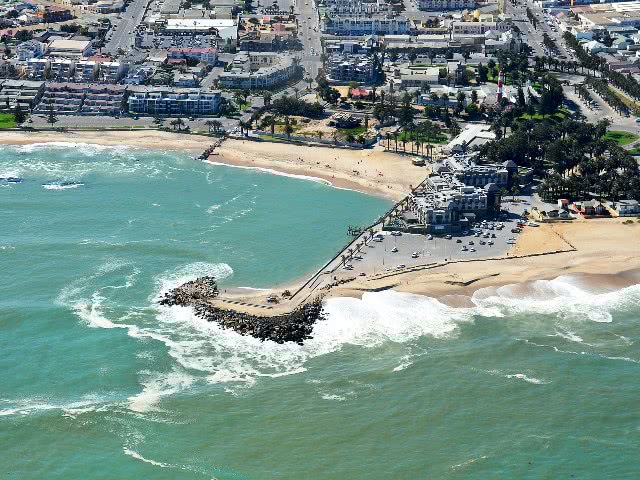
Swakopmund
Swakopmund is a coastal city in Namibia, west of the capital, Windhoek. Its sandy beaches face the Atlantic Ocean. Established by German colonists in 1892, the city’s colonial landmarks include the Swakopmund Lighthouse and the Mole, an old sea wall. Next to the lighthouse, the Swakopmund Museum documents Namibian history. Inland, the elegant Swakopmund Railway Station, now a hotel, also dates to the colonial era.

Erindi Private Game Reserve
Erindi Private Game Reserve is a protected reserve in Namibia, located southeast of Omaruru. It is a private game reserve located on a central plateau in Namibia, just three hours north of Windhoek. The reserve rests in between the towns of Otjiwarongo, Omaruru and Okahandja.
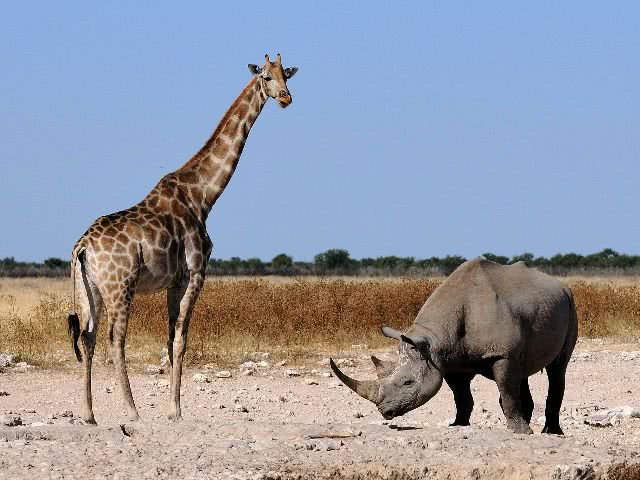
Etosha National Park
Etosha National Park is a national park in northwestern Namibia. It was proclaimed a game reserve in March 1907 in Ordinance 88 by the Governor of German South West Africa, Dr. Friedrich von Lindequist.
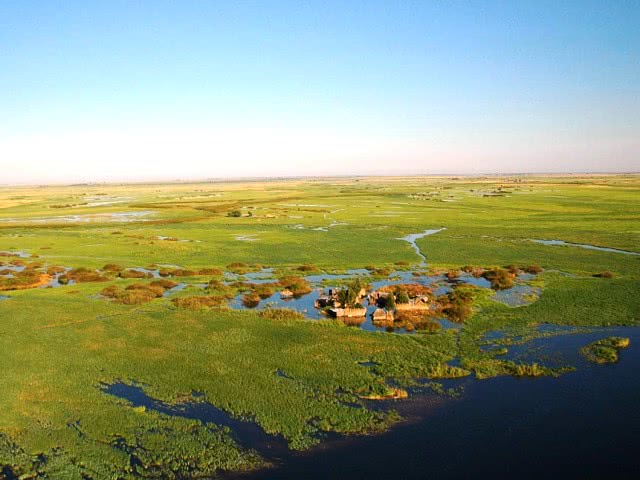
Caprivi Strip
Caprivi, or the Caprivi Strip, is a salient of Namibia which is and has been known by various names. The salient protrudes eastward for about 450 km from the north-eastern corner of Namibia. It is bordered by Botswana to the south, and by Angola and Zambia to the north.
The area is rich in wildlife and has mineral resources.
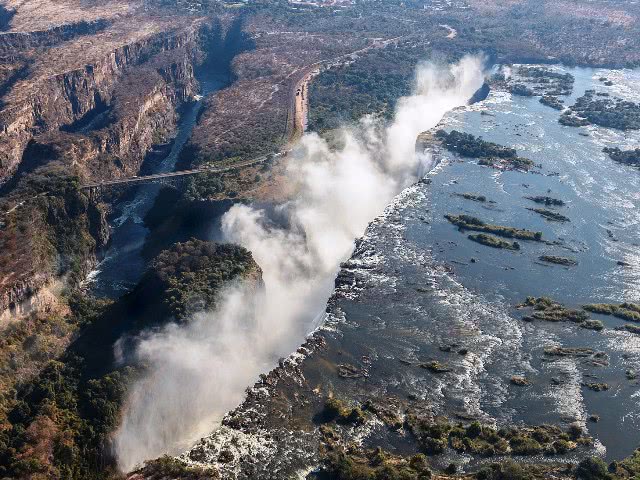
Victoria Falls
Victoria Falls is a waterfall in southern Africa on the Zambezi River at the border between Zambia and Zimbabwe.
While it is neither the highest nor the widest waterfall in the world, Victoria Falls is classified as the largest, based on its combined width of 1,708 metres (5,604 ft) and height of 108 metres (354 ft), resulting in the world's largest sheet of falling water.
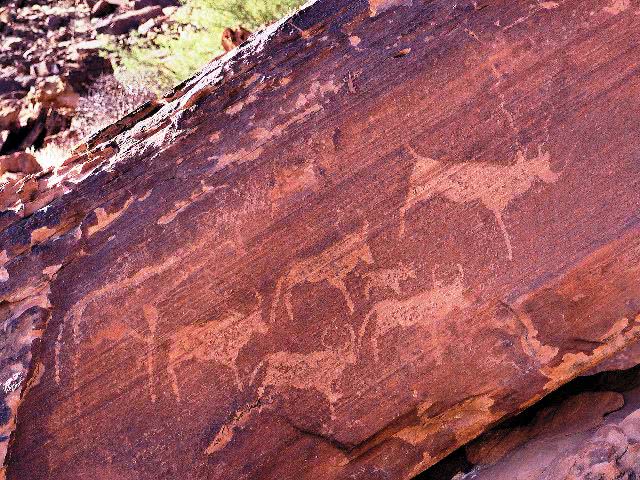
Twyfelfontein
Twyfelfontein, officially known as ǀUi-ǁAis, is a site of ancient rock engravings in the Kunene Region of north-western Namibia. It consists of a spring in a valley flanked by the slopes of a sandstone table mountain that receives very little rainfall and has a wide range of diurnal temperatures.
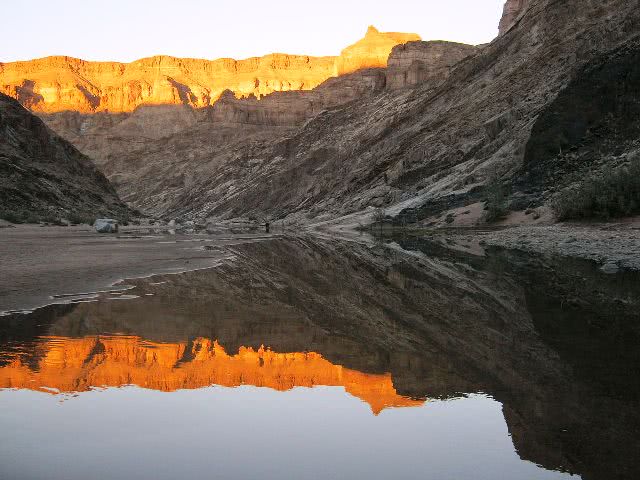
Fish River Canyon
The Fish River Canyon, is located in the south of Namibia. It is the largest canyon in Africa, as well as the second most visited tourist attraction in Namibia. It features a gigantic ravine, in total about 100 miles (160 km) long, up to 27 km wide and in places almost 550 meters deep.
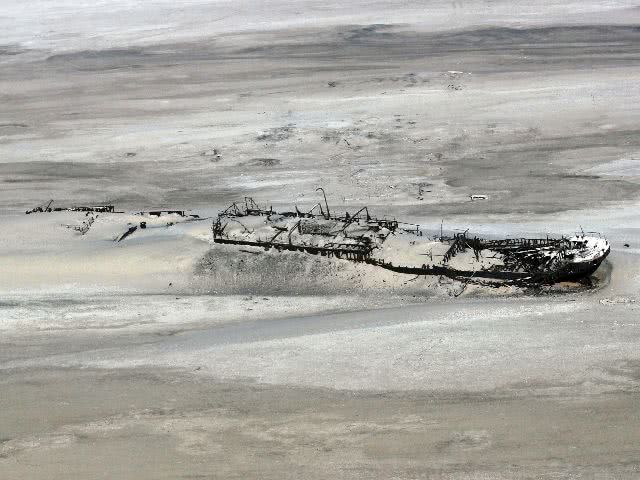
Skeleton Coast
The Skeleton Coast is the northern part of the Atlantic coast of Namibia and south of Angola from the Kunene River south to the Swakop River, although the name is sometimes used to describe the entire Namib Desert coast. The Bushmen of the Namibian interior called the region "The Land God Made in Anger", while Portuguese sailors once referred to it as "The Gates of Hell".
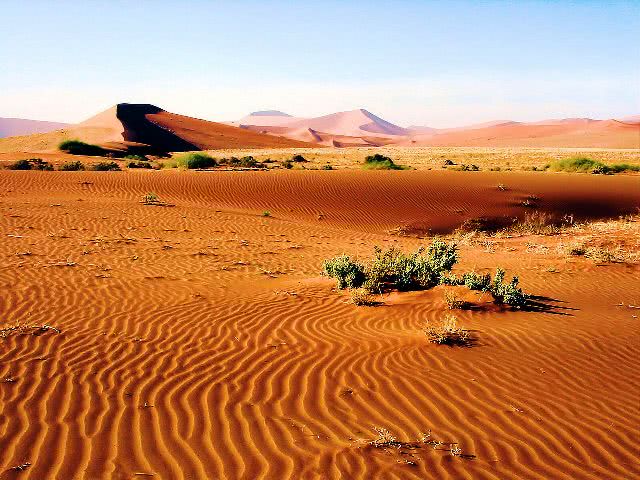
Namib-Naukluft National Park
The Namib-Naukluft Park is a national park of Namibia encompassing part of the Namib Desert and the Naukluft mountain range. With an overall area of 49,768 km² (19,216 sq mi), the Namib-Naukluft is the largest game park in Africa and the fourth largest in the world.

